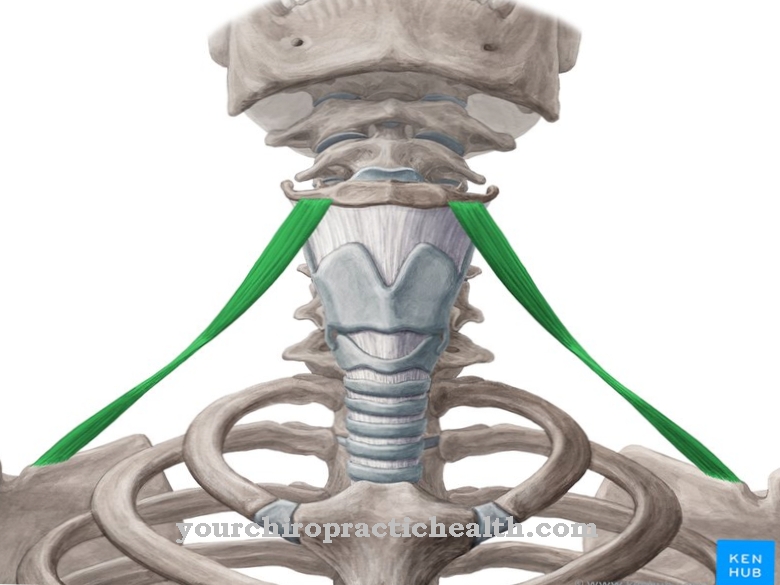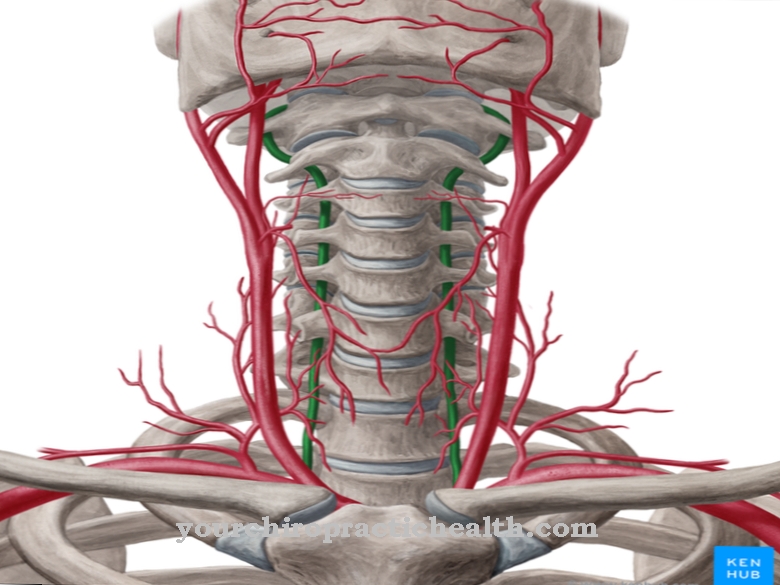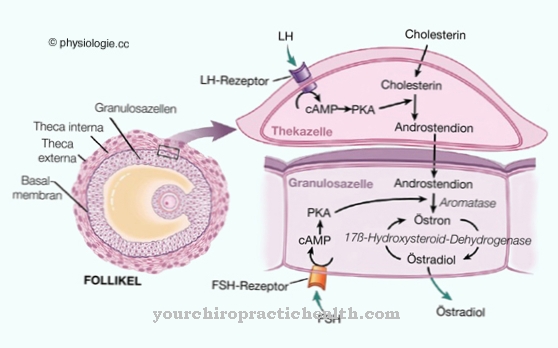The Internal capsule lies in the human brain and consists of nerve fibers that connect deeper areas and the cerebral cortex.
The numerous pathways that run through the inner capsule include the frontopontinal fibers, the corticospinal tract of the pyramidal tract, the temporopontinal fibers, the corticotectal tract and parts of the auditory and visual tract. A variety of neurological diseases can develop in the context of a stroke and other damage, including hemiparesis.
What is the internal capsule?
Various nerve tracts that run through the brain are combined in neurology to form the internal capsule. Two basic types of nerve tissue can be distinguished in the human brain: The gray matter contains many cell bodies (somata), while the white matter consists mainly of nerve fibers.
These fibers are extensions of neurons that carry electrical signals from one cell to the next. On the outside, they are surrounded by an insulating layer known as the myelin sheath, which makes the tissue appear white. The myelin layer consists of specialized glial cells, the Schwann cells. They grow spirally around the axon. Strictly speaking, axons are the mere extensions of nerve cells, while the term “nerve fiber” denotes the unit made up of the axon and myelin layer.
However, since most of the axons of the human nervous system are myelinated, this formal distinction only plays a subordinate role in practice. The internal capsule is also made of white matter.
Anatomy & structure
The fibers of the internal capsule stretch from the cerebral cortex on the surface of the brain to deeper areas such as the cerebral crus (crus cerebri). Their course is identical in both hemispheres.
Towards the middle of the brain, the thalamus and the caudate nucleus adjoin the nerve tracts of the inner capsule, while the lentiform nucleus, which in turn is composed of putamen and pallidum, is located on the other side. Anatomically, three areas can be distinguished within the internal capsule: the anterior crus, the internal capsule genu and the posterior crus.
The crus anterius ("front leg") consists of the nerve fibers that are located in the head-facing part of the bowl-shaped collection. This is where the frontopontine fibers run, which transmit nerve signals from the frontal lobe to the cerebral crus, as well as nerve fibers which connect the frontal lobe to the thalamus and are also known as the anterior thalamic stem. The genu capsulae internae only contains the corticonuclear pathway.
Significantly more nerve tracts can be found in the posterior crus ("rear leg"). These fibers include part of the pyramidal tract (corticospinal tract), the temporopontinal fibra, the corticotectal tract, corticorubral tract, corticoreticular tract, fibers of the central and posterior part of the thalamus (radiatio centralis thalami and radiatio posterior thalami acustica) and nerve fibers of the visual pathway (Radiatio optica).
Function & tasks
There is no other area of the brain running through as many nerve pathways as through the internal capsule. The fibers belong to different tracks and accordingly perform different functions.
The corticospinal tract transports motor information that has its origin in the precentral gyrus in the frontal lobe and first traverses the internal capsule before it runs to the cerebrum and further over the elongated medulla (medulla oblongata) and at the pyramid junction (Decussatio pyramidum) in the anterior pyramidal tract and split the pyramidal side strand web; The latter changes the side of the body so that the fibers from the right hemisphere supply the left half of the body and vice versa.
In the human body, the pyramidal trajectories are responsible for controlling voluntary movements. The temporopontine fibers have the task of connecting the temporal convolutions of the brain with the lateral posterior nuclei of the bridge (pons). In contrast, the corticotectal tract is involved in controlling the eyes, mediating both voluntary movements and reflexes.
Diseases
Lesions of the internal capsule usually result in various neurological disorders, as the density of nerve fibers is particularly high here. The impairments can affect several functional areas at the same time.
One possible consequence is paralysis on one side (hemiparesis). In connection with the internal capsule, it is primarily due to lesions on the pyramidal tract and other motor fibers that run through this area.
In this case, the contralateral side of the body is affected. The medicine calls the complete paralysis of one half of the body hemiplegia or hemiparalysis. The extent of the paralysis depends on how many fibers of the motor pathways are destroyed. Damage to the auditory and visual tract, the nerve fibers of which also run through the internal capsule, can impair the corresponding sensory modalities. Complex neurological disorders that are characterized by a variety of different symptoms are also possible.
A stroke, for example, is a possible cause of damage to the internal capsule. An interruption in the blood supply leads to a lack of oxygen, energy and nutrients in the nerve cells in the affected area. If the undersupply lasts too long, the cells die. In the event of a media infarction, this process is based on an occlusion of the arteria cerebri media. Another possible cause of lesions on the internal capsule is multiple sclerosis, which manifests itself in the destruction of the white matter.
Inflammation foci in the brain lead to the disappearance of the myelin sheaths, which electrically isolate the individual nerve fibers. This affects the transmission of the signals. In most cases, multiple sclerosis progresses in flares; a causal treatment is currently not possible.

























.jpg)

.jpg)
